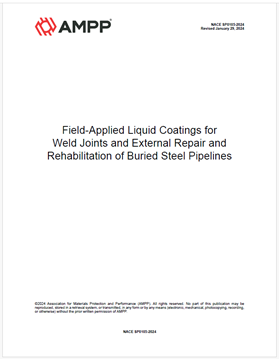Search
Products tagged with 'buried'
View as
Sort by
Display
per page
Buried Ultrasonic Corrosion Monitoring Sensors for Asset Integrity Monitoring
Product Number:
51321-16499-SG
Publication Date:
2021
$20.00
Detection And Location Of Coating Defects And Disbondments On Buried Pipelines With Differential Reflectometry Mapping
Product Number:
51322-18065-SG
Publication Date:
2022
$20.00
NACE SP0105-2024, Field-Applied Liquid Coatings for Weld Joints and External Repair and Rehabilitation of Buried Steel Pipelines
Product Number:
NACE SP0105-2024
Publication Date:
2024
$109.00
NACE SP0109-2023, Application of Tape Coatings for External Corrosion Protection of Buried Metal Pipelines
Product Number:
NACE SP0109-2023
Publication Date:
2023
$109.00
SP0408-2014, Cathodic Protection of Reinforcing Steel in Buried or Submerged Concrete Structures
Product Number:
21133-SG
ISBN:
1-57590-223-0
Publication Date:
2014
$179.00
SP0408-2019, Cathodic Protection of Reinforcing Steel in Buried or Submerged Concrete Structures
Product Number:
21133-2019
ISBN:
1-57590-223-0
Publication Date:
2019
$109.00






